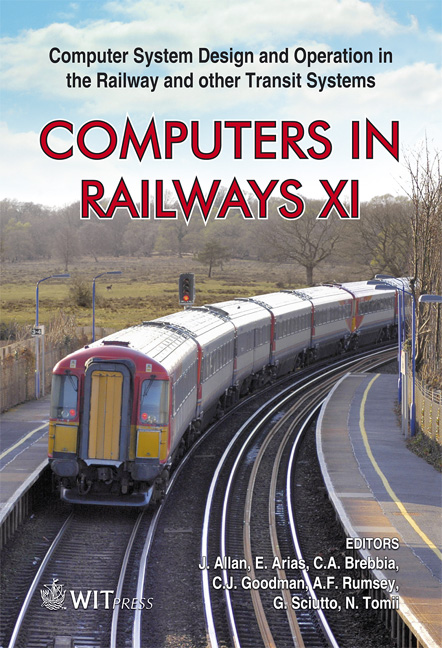Automatic Generation Of Car Shunting Scheduling In Railway Car Depots
Price
Free (open access)
Transaction
Volume
103
Pages
10
Page Range
585 - 594
Published
2008
Size
351 kb
Paper DOI
10.2495/CR080571
Copyright
WIT Press
Author(s)
Y. Nagasaki & S. Takahashi
Abstract
A train schedule defines each train’s arrival/departure time at a car depot. Between the arrival and departure times, every train has to have its designated works, such as inspection and cleaning of the cars, completed, which are predefined by a car operation schedule. The planner of car shuntings at a car depot must create a schedule that satisfies the above-mentioned conditions, while also taking care of other constraints, such as work places, length of tracks, crossover blockings of shunting routes, and workers’ schedules. In this article, we describe a system that automatically generates car shunting schedules. First, the initial solution phase roughly produces the order of the shuntings and works, the places where the works are to be conducted, and the routes of the shuntings by using a rule-based algorithm. In the second phase, the schedule is modelled by using the Programming Evaluation and Review Technique (PERT) to detect any condition violations and applied to the other rule-based algorithm to resolve these violations. This system changes the schedule by using different methods, such as changing a track to hold, changing a route to shunt, and swapping the order of works. Depending on the conditions of the violations, the system searches for the appropriate method to resolve theses violations step by step. The degree of the condition violations is evaluated by using the total amount of the delay of train departures. We also present the search results that are generated by the system in this paper. Keywords: depot, shunting, scheduling, PERT, rule-based algorithm. 1 Introduction There are four major types of railway scheduling, i.e., train, crew shift/roster, car-operation, and depot-shunting scheduling. The problem of shunting
Keywords
depot, shunting, scheduling, PERT, rule-based algorithm.





